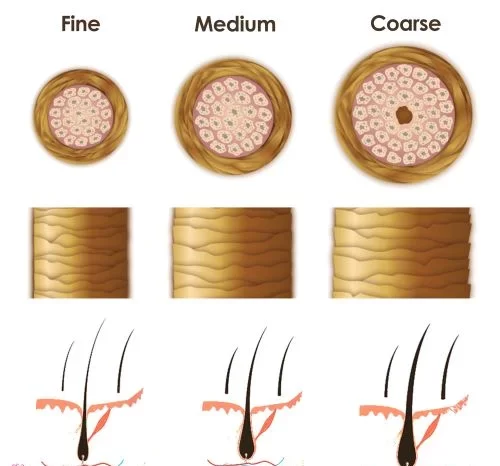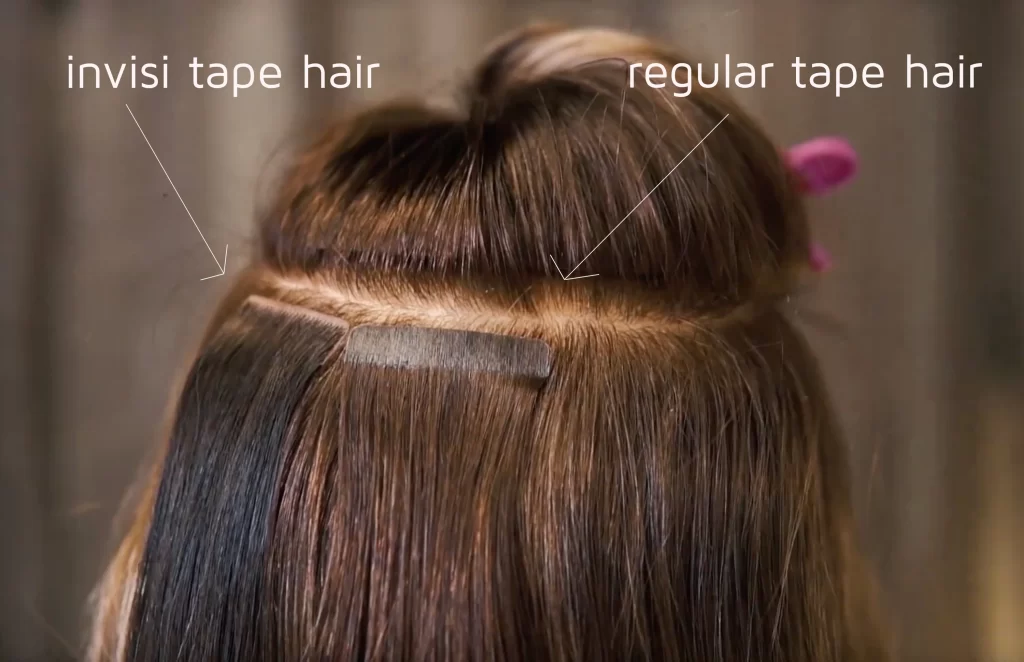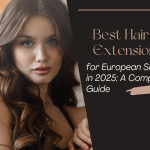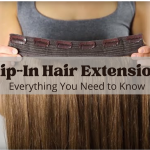Hair Knowledge
Human Hair Extensions: Everything You Need to Know
Human hair extensions are a cornerstone of the modern beauty and salon industry. Whether you’re a salon owner, stylist, or hair extension supplier, understanding the full scope of human hair extensions—from their types and quality to care and sourcing—is crucial for success. This comprehensive guide covers everything professionals need to know.
I. What Are Human Hair Extensions and Synthetic Hair Extensions?
When it comes to hair extensions, the first and most essential distinction to understand is between human hair extensions and synthetic hair extensions.
1. Human Hair Extensions
Human hair extensions are strands of real human hair that are added to a person’s natural hair to enhance length, volume, or color. Because they are natural, these extensions behave just like your own hair:
- Versatility: Human hair extensions can be styled, colored, and heat-treated like natural hair.
- Natural Look and Feel: They blend seamlessly with the user’s hair, offering a more natural look and feel compared to synthetic options.
- Durability: Depending on the quality and care, human hair extensions can last longer than synthetic extensions.
Human hair extensions are the gold standard in the salon and hair business industry, especially for premium services.
2. Synthetic Hair Extensions
In contrast, synthetic hair extensions are made from man-made fibers such as acrylic, polyester, or polyvinyl. They are often more affordable and pre-styled to hold their shape even after washing. However, they come with limitations:
- Cannot be heat-styled (unless labeled heat-resistant)
- Limited color range
- Unnatural shine
- Shorter lifespan (a few weeks to a couple of months)
While synthetic extensions may be suitable for temporary or budget-friendly solutions, human hair extensions are preferred by professionals and high-end clients, especially in the European market, where quality and longevity are priorities.
II. Characteristics and Structure of Human Hair Extensions
Understanding the characteristics and internal structure of human hair extensions is crucial for salon professionals and hair business owners. It helps ensure the right choice of products, better maintenance, and higher client satisfaction.
1. Basic Structure of Human Hair
Main Components of Human Hair:
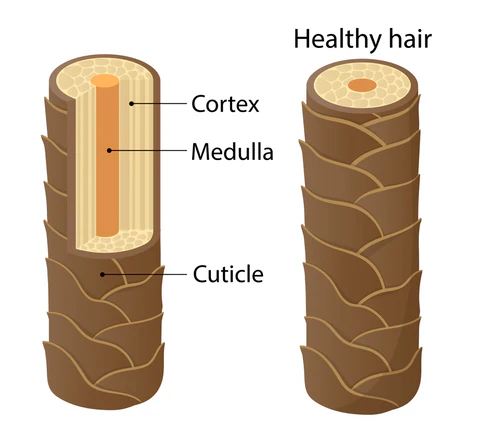
Cuticle:
- The outermost layer made up of overlapping flat cells, like roof shingles.
- A healthy cuticle layer appears smooth and protects the inner layers.
- The condition of the cuticle directly affects the hair’s shine, tangle resistance, and longevity.
Cortex
- The thickest middle layer containing keratin and pigment (melanin).
- This layer determines the hair’s strength, elasticity, and natural color.
- Chemical treatments like coloring and perming mostly affect the cortex.
Medulla
- The innermost core, often absent in finer hair types.
- Its function is not fully understood but is believed to contribute to insulation.
- Most hair extensions, especially high-quality ones, have a very thin or no medulla.
For extensions, cuticle alignment is key. Whether your hair is prone to tangles or damage is determined by this cuticle layer. This structure preserves the natural look and feel of the hair over time.
2. Hair Density and Why It Matters
Hair density refers to the number of strands of hair on the scalp—or, in the case of extensions, how thick or full the hair feels. For human hair extensions, understanding and choosing the right density is key to achieving a natural look and satisfying different client preferences.
Types of hair density in extensions:
Low density (thin):
- Lightweight and suitable for clients with naturally fine or thinning hair.
- Offers a subtle volume boost but may not blend well with thicker natural hair.
- Commonly used in partial applications or for adding a touch of fullness.
Medium density:
- Balances volume and natural appearance.
- Most popular choice for full-head installations.
- Easy to blend with average hair thickness.
High density (thick):
- Provides dramatic volume and fullness.
- Ideal for clients with naturally thick hair or those seeking a glamorous, voluminous look.
- Requires proper layering and blending techniques to avoid looking bulky.
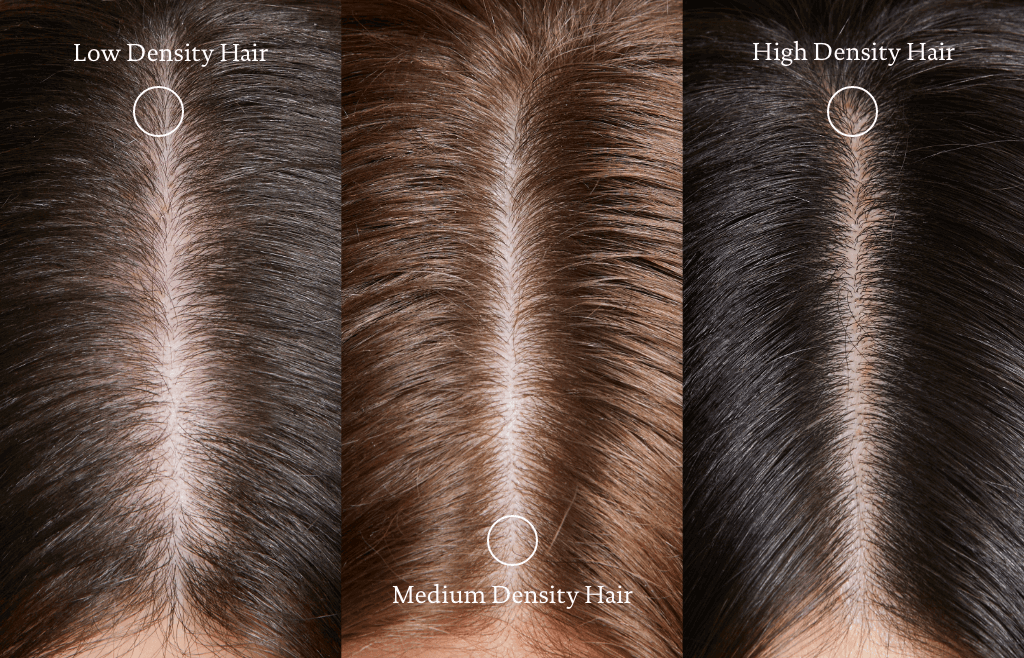
Why density matters:
- Blending: Matching extension density to natural hair ensures seamless integration and a more realistic result.
- Comfort: High-density hair is heavier. Clients with sensitive scalps or finer hair types may prefer lower density for comfort.
- Styling versatility: Thicker extensions offer more styling options (e.g., updos, braids), but they also require more maintenance and support.
When purchasing or recommending extensions, always consider your client’s natural hair type and desired outcome. European salon clients, for example, often favor medium to high density for a full yet refined finish.
3. Hair Diameter (Hair Thickness)
Hair diameter refers to the thickness of an individual hair strand and plays a critical role in how extensions look and feel when blended with natural hair. It’s often categorized into:
- Fine hair:
- Thin strands, soft texture.
- More prone to breakage and requires gentle handling.
- Common in many European hair types.
- Medium hair:
- Balanced thickness, suitable for most extension styles.
- Blends easily with the average natural hair density.
- Coarse hair:
- Thick strands, more texture and volume.
- Often found in Southeast Asian or Indian hair, ideal for fuller looks.
- May require more styling effort to blend with finer natural hair.
3 types of human hair diameter. Source: curlfans.com
Why diameter matters in hair extensions:
- Matching texture: Extensions that closely match the client’s natural hair diameter result in a more seamless finish.
- Styling impact: Fine hair tends to hold curls longer, while coarse hair offers more volume and body.
- Weight & feel: Coarser extensions may feel heavier; fine ones are lightweight and more comfortable for extended wear.
💡 Refer to the detailed article: Hair Thickness and What You Need to Know
4. Hair Porosity in Human Hair Extensions
Hair porosity refers to how well hair can absorb and retain moisture. In the world of human hair extensions, understanding porosity is crucial for both suppliers and salon professionals. It influences how the hair reacts to coloring, styling, and daily maintenance.
Types of hair porosity:
- Low porosity:
- The cuticles are tightly packed.
- Moisture struggles to penetrate but also doesn’t escape easily.
- Hair is typically shiny and smooth but can be resistant to dye or chemical treatments.
- Suitable for clients who don’t need frequent coloring or heat styling.
- Medium/Normal porosity:
- The cuticle layer is slightly raised, allowing moisture to enter and be retained effectively.
- Hair is easy to style and holds color well.
- This is the most versatile and sought-after porosity level in hair extensions.
- High porosity:
- The cuticles are raised or damaged, which allows moisture to enter and exit rapidly.
- Hair often feels dry, tangles easily, and is more prone to breakage.
- High-porosity hair may need more intensive conditioning and product care.

How porosity affects extension performance:
- Styling: Low-porosity hair takes longer to dry and may not hold curls as well. High-porosity hair may appear frizzier and need heat protection.
- Coloring: Medium-porosity hair accepts color more evenly, while low or high porosity may lead to inconsistent results.
- Longevity: Extensions with medium porosity typically last longer and require less intensive maintenance.
💡 Refer to the detailed article: What is Hair Porosity and What it Means?
II. How to Grade Human Hair Extension Quality
There are many ways for people to classify hair on the market and the easiest way that you often encounter is to put the characters 3A, 4A, 5A, … even 14A next to the hair name. But there is no international standard that regulates or verifies this classification. Now you should simplify and ignore all those complicated and professional-looking names. To understand the quality and the price you have to pay, you only need to clarify 2 issues: Hair Purity and Length Uniformity.
1. Hair Purity
Hair purity is the benchmark that indicates how close a bundle of human hair extensions remains to its original, natural state. Purity directly influences longevity, colouring potential, and overall client satisfaction—especially in European salons where quality controls are strict. Regardless of the differences in hair origin (European, Asian, African, etc.), quality—and ultimately price—depends heavily on hair’s purity. For salon professionals and resellers, understanding these categories is essential to choosing the right products for their clients’ different needs and budgets.
What Does Hair Purity Cover?
- Source Integrity – hair collected from a single donor, free of synthetic or animal-hair blends.
- Cuticle Alignment – cuticles remain intact and face the same direction, minimising tangling.
- Chemical History – absence (or degree) of bleaching, permanent dyes, acid baths, silicone coatings, or heavy steam processing.
- Structural Uniformity – consistent diameter, color tone, and texture from root to tip within each bundle.
In professional trade, Hair Purity is divided into 4 levels: Raw – Virgin – Remy – Non-Remy
A. Raw Hair: The Purest Form
Raw hair is considered the highest grade available in the market. It is:
- 100% unprocessed and chemical-free
- Cut directly from a single donor
- Collected with all cuticles intact and aligned in the same direction
This hair is thick, naturally textured, and long-lasting (with proper care, it can last up to 3–5 years). Raw hair blends exceptionally well with natural hair and can be colored, heat-styled, or treated just like your own. It often comes in natural straight, wavy, or curly patterns.
✅ Best for: High-end salons, luxury clients, or professionals who prioritize performance and longevity.
Learn more about Raw Hair through the article: How To Test If It Is Raw Hair
B. Virgin Hair: Slightly Processed, Still High Quality
Virgin hair is also collected from a single donor with aligned cuticles. However, it may have undergone minimal processing, such as:
- Gentle steam-texturing
- Basic sanitation or conditioning
- Color adjustment to match market preferences (natural black or brown)
While not as untouched as raw hair, virgin hair still maintains its strength, softness, and styling versatility.
✅ Best for: Salons that want high-quality results but with more consistent textures or shades than raw hair provides.
👉Learn more about Virgin Hair through the article: Virgin Hair And What You Need To Know
C. Remy Hair: Cuticle-Aligned but Processed
Remy hair is widely used in the market and refers to cuticle-aligned hair, meaning all strands flow in the same natural direction. This prevents tangling and matting, making it suitable for professional use.
However, Remy hair is:
- Often sourced from multiple donors
- Usually chemically processed to create uniform texture or color
- Coated with silicone to boost shine (which fades with washing)
Remy hair provides a smooth, manageable result at a lower cost than raw or virgin options, though its lifespan is shorter—typically 6–12 months with proper care.
✅ Best for: Mid-range salons or clients who want quality on a moderate budget.
5. Non-Remy Hair: Budget-Friendly but Short-Lived
Non-Remy hair is collected from the floor or mixed sources after detachment from the donor, so cuticles run in multiple directions. To mask issues like tangling and matting, it is:
- Heavily processed
- Acid-washed (removing cuticles)
- Coated with silicone for temporary shine
While non-Remy hair is the most affordable, it loses quality quickly—lasting just a few weeks to a couple of months.
✅ Best for: One-time events or low-budget markets. Not recommended for repeat or professional salon use.
Choosing the Right Grade for Your Salon
Understanding these categories allows you to tailor your human hair extensions offering based on:
- Client expectations
- Budget
- Desired longevity
- Styling flexibility
At N Hair Factory, we specialize in raw and virgin Vietnamese hair—ideal for European salons that demand uncompromised quality. Each bundle is ethically sourced, hand-selected, and quality-checked before shipment.
💡 Pro Tip for Salons: Always verify the supplier’s hair grade claims. Mislabeling is common—what’s marketed as “virgin” or “Remy” might actually be mixed or low-grade hair. Ask for videos, samples, or lab test results if necessary.
Let’s find out: The Difference Between Remy Hair and Non-Remy Hair
2. Hair Length Uniformity
Length uniformity or bottom thickness is the difference in thickness between the top and the end of a hair bundle. Normally, natural hair always tends to thin out towards the ends because the hairs are of different lengths. You can definitely feel this when you stroke a bundle from top to bottom. The higher the level of uniformity, the greater the value of that bundle of hair.
The industry categorizes this as single drawn, double drawn, or super double drawn hair:
✂️ Single Drawn Hair
- Definition: A natural hair bundle cut from a donor and lightly trimmed, containing strands of mixed lengths.
- Appearance: Thick at the top, noticeably thinner at the ends.
- Ratio: Only around 50–55% of the strands are the full bundle length.
- Usage: More affordable; often used in lower-budget installations or where layering is intended.
✅ Best for a natural, tapered look – but may require trimming or layering for fullness.
✂️ Double Drawn Hair
- Definition: The hair bundle is manually sorted to remove shorter strands, increasing uniformity.
- Appearance: Fuller from top to bottom, with ends that appear dense.
- Ratio: Approximately 70–75% of the strands are of the same full length.
- Usage: Most popular for professional salon use in Europe. Offers better styling, especially for straight or blunt looks.
✅ Provides a more luxurious, even finish – ideal for mid- to high-end clientele.
✂️ Super Double Drawn Hair
- Definition: The most refined quality – almost all shorter hairs are removed by hand.
- Appearance: Extremely thick and voluminous from root to tip, with minimal taper.
- Ratio: Around 85–90% or more of the strands are of the same length.
- Usage: Premium salons, luxury installations, high-definition styling.
✅ Perfect for premium services. Delivers the most glamorous and full-bodied results.
👉 Watch real product video about 3 bottom-thickness types
🎯 How It Affects Your Clients
- A client with fine or short hair will benefit most from double or super double drawn hair, as it blends more naturally and reduces the need for excessive layering.
- Choosing the right draw level ensures you don’t sacrifice styling options, and enhances longevity and satisfaction.
If you’re sourcing from Vietnam or other markets, be sure to ask your Vietnam hair supplier to confirm the source grade and drawing grade—and request photos or video proofs. The difference between single and double drawn hair may not seem obvious in photos, but becomes very noticeable after installation.
III. Popular Types of Human Hair Extensions
When choosing human hair extensions for your salon services, it’s crucial to understand the variety of installation methods available. Each type serves different needs—whether it’s for long-term wear, styling flexibility, or low-maintenance use.
Here’s a breakdown of the most popular types of extensions used in European salons:
1. Clip-In Hair Extensions
What It Is
Clip-in hair extensions are temporary, non-invasive hairpieces that come in wefts with attached pressure-sensitive clips. They are designed for quick, at-home application and are primarily intended for occasional wear rather than long-term use.
Types of Clip-Ins
- Full Head Sets: Include multiple wefts to provide complete coverage and volume enhancement.
- Single Wefts or Volumizer Pieces: Used to target specific areas for added fullness or length.
- Ponytail clip-ins or fringe clip-ins: A single large piece for ultra-fast installation, ideal for quick transformations.
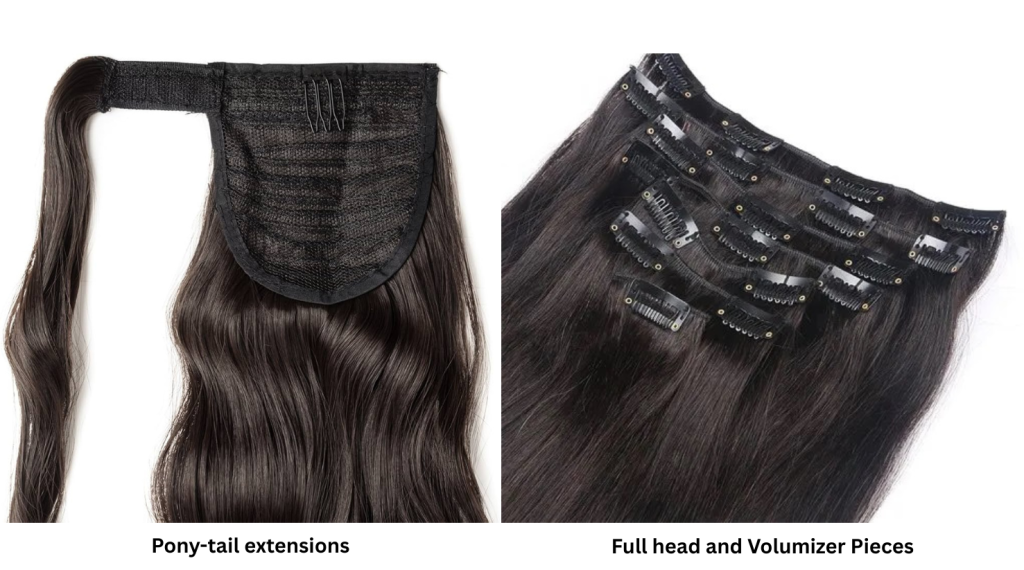
Characteristics
- Application: Easily attached and removed by the wearer in minutes without professional assistance.
- Duration: Typically worn for a day or event, then removed before sleeping.
- Hair Quality: Available in both synthetic and human hair, though high-grade Remy human hair offers the most natural finish and longevity.
- Ideal Clients: Perfect for clients seeking versatility without commitment, such as brides, photoshoots, or occasional styling needs.
- Maintenance: Minimal—can be washed occasionally and stored properly when not in use.
💡 Recommended for clients who prioritize flexibility over permanence.
Let’s find out: Everything You Need to Know Before Choosing Clip In Hair Extensions
2. Tape-In Hair Extensions
What It Is
Tape-in hair extensions are semi-permanent hair extensions that use medical-grade adhesive tape to sandwich sections of the natural hair between two wefts. This method lies flat against the scalp, creating a natural appearance with even weight distribution.
Types of Tape-Ins
- Standard tape-in wefts
- Invisible tape-ins (with hand-tied tops for a seamless blend)
- Single-sided tape-ins (for finer hair types)
Invisible and normal tape-in hair. Source: pahairextensions
Characteristics
- Application: Requires professional installation. Typically takes 45 minutes to 1.5 hours depending on volume.
- Longevity: Lasts 6–8 weeks before reapplication is needed. Hair can be reused with new adhesive strips for multiple cycles.
- Comfort: Lightweight and virtually undetectable. Lies flat against the head and blends seamlessly.
- Maintenance: Clients must avoid oil-based products near the roots to prevent tape slippage. Requires gentle brushing and sulfate-free hair care products.
- Best For: Clients seeking a semi-permanent solution with minimal damage, including those with medium to fine hair textures.
📌 Proper installation is critical to avoid slippage or breakage.
3. Keratin Bond (Fusion) Extensions
Keratin bond hair extensions—also known as fusion extensions—are individual strand-based systems that use a keratin-based adhesive to attach the extension to the client’s natural hair. Contrary to common belief, the “keratin” in this context does not refer to the natural protein found in hair but rather to a specialized synthetic adhesive formulated for safe, long-lasting hair bonding.
This method is widely used across professional salons in Europe for its natural finish, high durability, and versatility. Fusion extensions are divided into two major techniques: Hot Fusion and Cold Fusion, each with distinct applications and benefits.
3.1. Hot Fusion Extensions
Definition
Hot fusion involves the application of hair extensions using a heat-activated keratin adhesive. A fusion heat connector tool (similar to a flat iron) is used to melt the adhesive, bonding the extension strand to the natural hair.
Types of Hot Fusion Tips
- U-Tip (Nail Tip): Pre-bonded hair shaped like a “U” that wraps around the hair shaft and is melted using the heat tool.
- Flat Tip: A flatter version of the U-tip, offering a wider bond area for more secure placement.
- V-Tip: A variation of the U-tip, but folded in a “V” shape; less common but used for specific styling preferences.
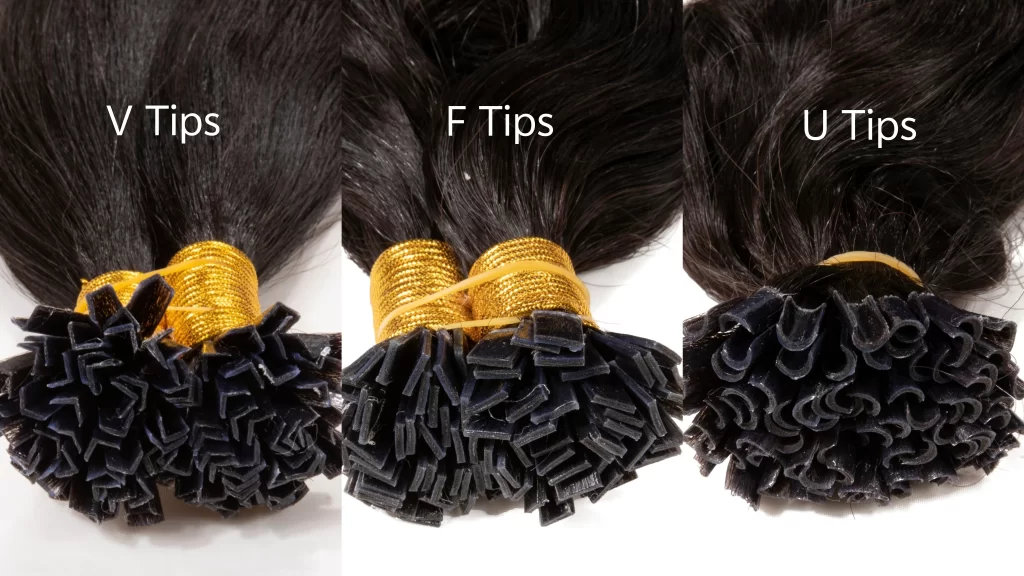
Characteristics
- Strong, durable bonds lasting up to 3–4 months.
- Ideal for medium to thick hair textures.
- Requires professional application and removal to avoid damage.
- Heat exposure means it’s not suitable for clients with fragile or chemically treated hair.
3.2. Cold Fusion Extensions
Definition
Cold fusion is a heat-free method that uses ultrasonic waves or mechanical compression to activate a special keratin-based adhesive. This process is considered gentler on the hair and scalp, making it suitable for clients with finer hair or sensitivity to heat.
Common Types
- I-Tip (Stick Tip) Extensions: These are cylindrical strands that are attached using a micro ring or bead, clamping the I-tip and the client’s hair together. While often grouped with micro ring extensions, many classify I-tips as part of the cold fusion family due to their adhesive-free, low-heat technique.
- Ultrasonic Keratin Tips: Applied using a specialized cold fusion machine that uses sound waves to bond the keratin without direct heat.
Characteristics
- No heat involved, reducing risk of heat damage.
- Recommended for thin, delicate, or previously damaged hair.
- Easier to remove with less residue.

Typically slightly less durable than hot fusion methods.
4. Sew-In (Weave) Extensions
Definition
Sew-in extensions, also known as weaves, involve braiding the client’s natural hair into horizontal cornrows and sewing wefts of hair onto the braids using a needle and thread. This method is highly durable and commonly used for clients with thick, coarse, or textured hair.
Types of Sew-In Techniques
- Full Sew-In: All natural hair is braided and fully covered with extensions.
- Partial Sew-In: Some natural hair is left out for blending.
- Versatile Sew-In: Allows for styling in various directions, including updos, by leaving out more natural hair.
Characteristics
- Application: Takes 2–3 hours to install; requires significant professional skill.
- Longevity: Typically worn for 6–10 weeks before removal is necessary.
- Tension: Requires proper braiding technique to avoid traction alopecia or scalp tension.
- Hair Quality: Works best with wefted human hair (Remy or virgin preferred) to ensure durability and style versatility.
- Maintenance: Clients should regularly cleanse the scalp and deep-condition the extensions.
- Ideal Clients: Especially suitable for individuals with thick or afro-textured hair, or those seeking protective styles.
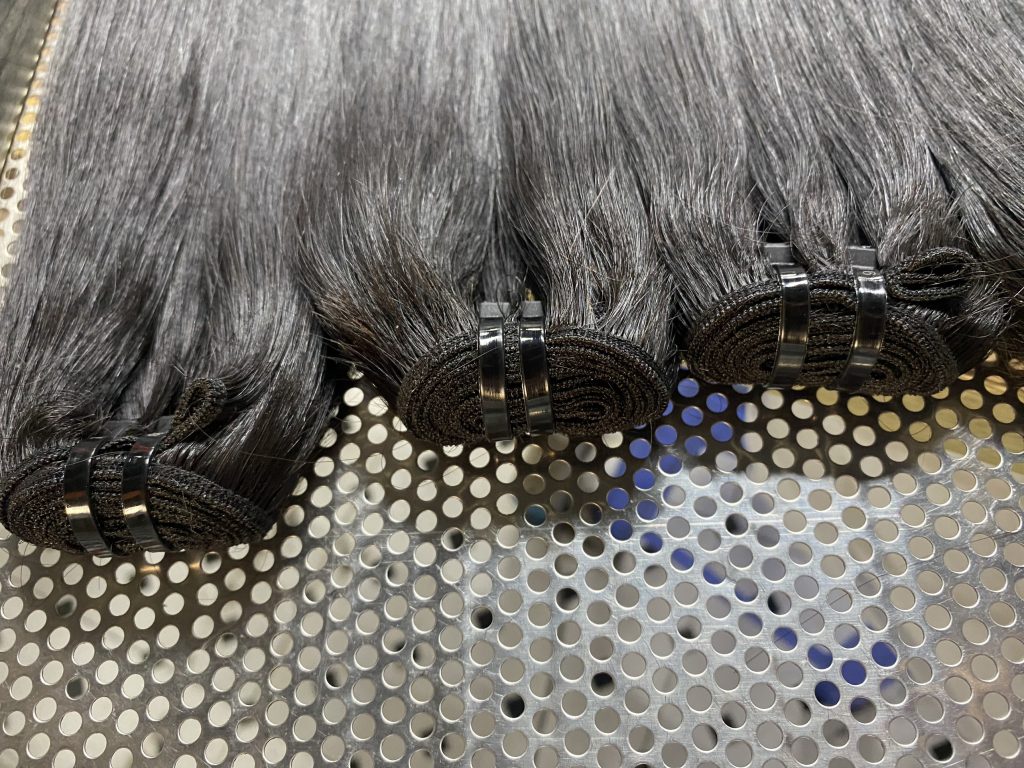
IV. Human Hair Extensions Textures: Popular Choices Explained
Hair texture refers to the shape or pattern of the hair strand—whether straight, wavy, or curly. In the hair extensions industry, texture is a crucial factor affecting client satisfaction, styling options, and maintenance needs. While some textures occur naturally, most are achieved through steam processing to mimic popular looks while maintaining the integrity of the cuticle.
Below are the most commonly requested and commercially available human hair extension textures used in professional salons across Europe.
1. Natural Straight
Description:
Natural straight hair appears straight but may have a very slight wave or bend. This is typical of raw human hair that hasn’t been chemically altered.
Characteristics:
- Soft texture with slight natural movement
- Blends easily with many European hair types
- Can be styled with heat tools into curls or waves and holds styles well
Client Fit: An excellent everyday texture that balances manageability and styling flexibility.
2. Bone Straight
Description:
Bone straight hair is ultra-smooth, sleek, and has no wave or curl pattern. It is either naturally straight (in the case of high-grade raw hair) or straightened using gentle steam processing.
Characteristics:
- Glass-like shine and soft movement
- Ideal for sharp, clean styles such as blunt cuts or long layers
- Requires regular flat ironing to maintain the ultra-straight finish if exposed to humidity
Client Fit: Highly requested by clients looking for a modern, polished look with minimal volume. Works well for most hair densities.
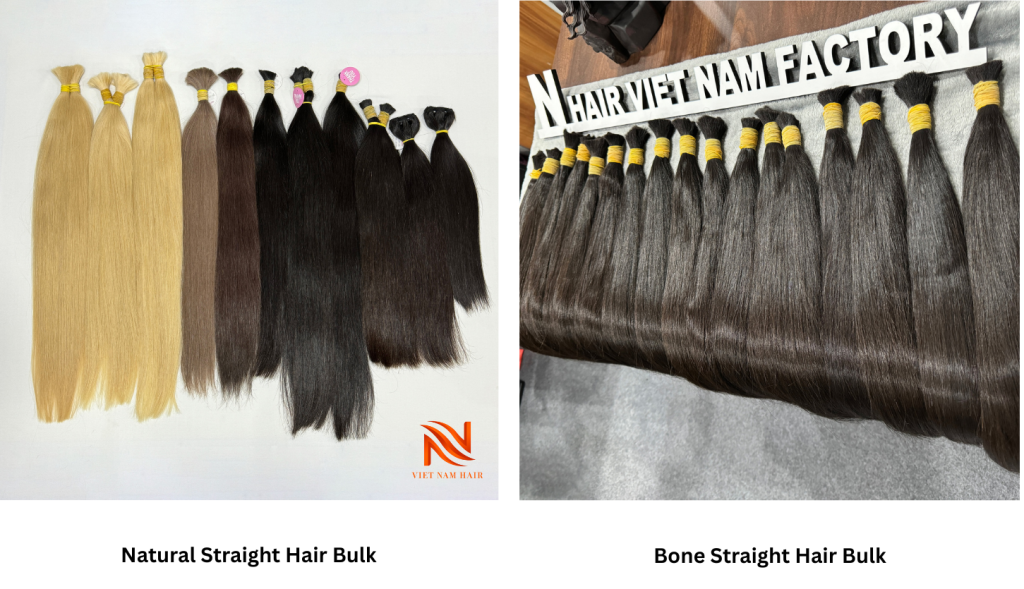
3. Body Wave
Description:
Body wave extensions have a soft, loose “S” shape wave that creates a gentle, voluminous effect. Achieved through steam-processing on straight hair.
Characteristics:
- Adds natural-looking bounce and volume
- Easy to maintain with light styling
- Can be straightened or curled with heat tools
Client Fit: Popular among clients looking for a romantic, effortless style that adds movement without being too dramatic.
4. Deep Wave
Description:
Deep wave hair features tighter, more defined waves than body wave. The texture provides a more pronounced pattern that mimics naturally curly hair types.
Characteristics:
- Fuller appearance than looser waves
- Holds wave pattern well after washing
- Requires moisture care to prevent frizz and dryness
Client Fit: Great for clients seeking glam styles with volume or to blend with naturally wavy or curly hair types.
Let’s find out the difference between Deep Wave and Body Wave
5. Curly (Kinky Curly / Afro Curly / Jerry Curl)
Description:
Curly textures vary in tightness—from loose curls (like Jerry curl) to highly coiled, afro-textured curls (kinky curly). These are typically steam-treated for pattern consistency.
Characteristics:
- Very voluminous and bold
- Requires regular hydration and curl-enhancing products
- Mimics natural curl patterns for Afro-textured or mixed hair clients
Client Fit: A favorite for protective styles or for clients with Type 3 and 4 hair textures seeking a seamless blend.
6. Loose Wave / Water Wave
Description:
Loose wave or water wave hair has an elegant ripple-like pattern, looser than deep wave but more defined than body wave. Offers an effortless beachy look.
Characteristics:
- Light, flowing waves
- Low-maintenance with natural-looking volume
- Can be heat-styled or air-dried for a natural finish
Client Fit: Ideal for summer looks or clients seeking casual yet stylish everyday hair.
What is the difference between Loose Wave and Water Wave
Texture Considerations for EU Professionals
- Climate Impact: European clients often experience changes in hair behavior due to humidity, especially in Mediterranean or coastal regions. Educate clients on maintaining texture with climate-appropriate products.
- Blending with Natural Hair: Matching extension texture to the client’s natural hair or preferred styling finish is essential for a seamless, believable look.
- Styling Tools Compatibility: Remind clients that excessive heat use can disrupt the wave/curl pattern—especially in steam-processed textures. Recommend texture-safe styling practices.
V. How to Care for Human Hair Extensions
Proper care is essential to preserve the quality, appearance, and lifespan of human hair extensions. While human hair can last significantly longer than synthetic alternatives, it still requires tailored maintenance—especially since it no longer receives natural oils from the scalp.
The most important rule? You must truly understand the hair you’re working with. Every extension has its own characteristics—whether it’s low or high porosity, coarse or fine in diameter, or naturally straight or curly. Choosing the right products and techniques starts with identifying these properties. What works for one texture may cause dryness, frizz, or even damage in another.
This section covers essential care practices you should share with clients, as well as internal salon protocols for maintaining your inventory.
1. Washing and Conditioning
Best Practices:
- Frequency: Every 10–15 wears or when product buildup occurs
- Use sulfate-free, alcohol-free products: These preserve moisture and prevent the cuticle from drying out
- Detangle before washing: Use a wide-tooth comb or loop brush
- Technique: Gently wash in downward motions—never rub or twist the hair
- Conditioning: Use deep conditioner mid-shaft to ends; avoid the bonds or roots if the extensions are installed
Pro Tip: For sewn-in or tape-in extensions, recommend clients wash in the shower with their head upright to avoid tangling at the root.
2. Brushing and Detangling
Tools:
- Loop brush
- Wide-tooth comb
- Soft-bristle brush for smoothing
Technique:
- Always start from the ends and work upward
- Hold the base to reduce tension on bonds or tracks
Brush at least twice daily to avoid matting, especially near the nape
3. Drying and Heat Styling
Drying Tips:
- Blot with a microfiber towel—never rub
- Air dry when possible
- If blow-drying, use a heat protectant and low-to-medium heat
Heat Styling:
- Always apply a heat protectant
- Do not exceed 180°C (356°F) on irons
- Avoid applying direct heat to keratin bonds or tapes
Salon Tip: Use ionic tools or steam straighteners for professional styling to minimize damage and retain moisture.
4. Night Care Routine
Recommendations:
- Tie the hair in a low braid or ponytail
- Sleep on a silk or satin pillowcase to reduce friction
- Avoid sleeping with wet hair—this causes tangling and bacterial buildup
5. Storage for Clip-Ins and Wigs
When not in use:
- Store clean and dry in a silk/satin bag or original packaging
- Keep away from sunlight and humidity
- Gently brush and detangle before storing
6. Salon Maintenance Schedule
Installed Extensions:
- Tape-ins & sew-ins: Require tightening or reinstallation every 6–8 weeks
- Keratin bonds: Usually replaced every 3–4 months depending on natural hair growth
- Micro-rings: Tightening every 4–6 weeks
Client Education:
Offer a care card or digital guide post-installation. It builds client trust and helps protect your results between visits.
👉How I Properly Care for Hair Extensions
VI. Top Human Hair Supplying Countries
Human hair extensions are sourced globally, but only a few countries have earned a solid reputation for quality, ethical sourcing, and reliable production capacity. Understanding the differences between these supplying regions is essential for salon owners and distributors who seek consistency and premium-grade products for their clients.
1. Vietnam
Vietnam is one of the fastest-rising stars in the global human hair market, especially among European hair professionals. Vietnamese hair is typically:
- Thick and strong, yet naturally silky.
- Collected ethically, often from donors in rural areas who maintain natural lifestyles, free from chemical processing.
- Ideal for bone straight, wavy, and natural black textures.
The appeal of Vietnamese hair lies in its durability, cuticle alignment, and low processing, making it highly preferred for raw and virgin hair.
2. India
India has long been a dominant force in the hair industry. Most of its hair comes from temple donations, where hair is shaved as part of religious rituals.
- Often naturally wavy or curly.
- Available in a range of textures but usually requires some processing to meet Western standards.
- A large portion of Indian hair on the market is non-Remy, although Remy and virgin options are also available.
Indian hair is affordable and widely used, but the quality can vary significantly depending on the supplier and processing methods.
3. China
China is the largest hair processor and exporter in the world, but it is more focused on mass production than raw sourcing.
- Most hair is imported (often from India or Southeast Asia), then chemically processed.
- Commonly used for synthetic blends, dyed, and textured extensions at lower cost.
- Great for temporary use or budget-conscious markets, but not ideal for high-end salons.
Chinese suppliers excel in volume, custom textures, and production technology, but human hair from China often lacks the natural quality of less-processed sources.
4. Cambodia
Cambodian hair is gaining popularity for its:
- Thick strands, similar to Vietnamese hair but often coarser.
- Naturally dark brown shades.
- Mostly collected from donors in remote regions with low chemical exposure.
Cambodian hair is less abundant, making it more boutique and niche, often used for curly and textured styles that require more volume and density.
5. Brazil (and other South American sources)
Brazilian hair is widely marketed but not always sourced from Brazil. In many cases, it’s a branding term for a particular texture rather than actual origin.
- Typically coarse and full-bodied.
- Popular in the U.S. and Latin America for its versatility in styling.
For EU salons, however, Brazilian hair is less common due to supply inconsistencies and lack of direct traceability.
Key Takeaway:
When selecting a supplier, consider both the origin and the processing method. Countries like Vietnam and Cambodia offer premium raw and virgin hair with minimal processing, while China and India provide a broader range of options but require more vetting. Understanding these differences allows salon owners and industry professionals to choose the right hair for the right clients—and at the right price point.
✅ 5 Best Countries To Buy Human Hair


